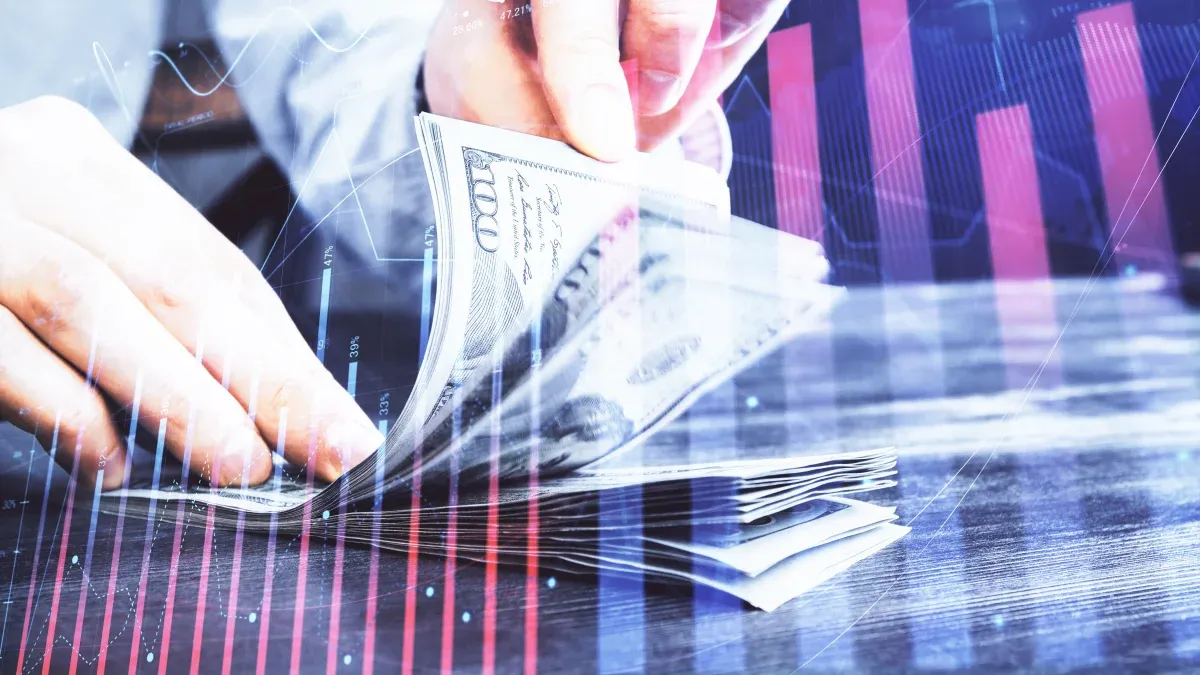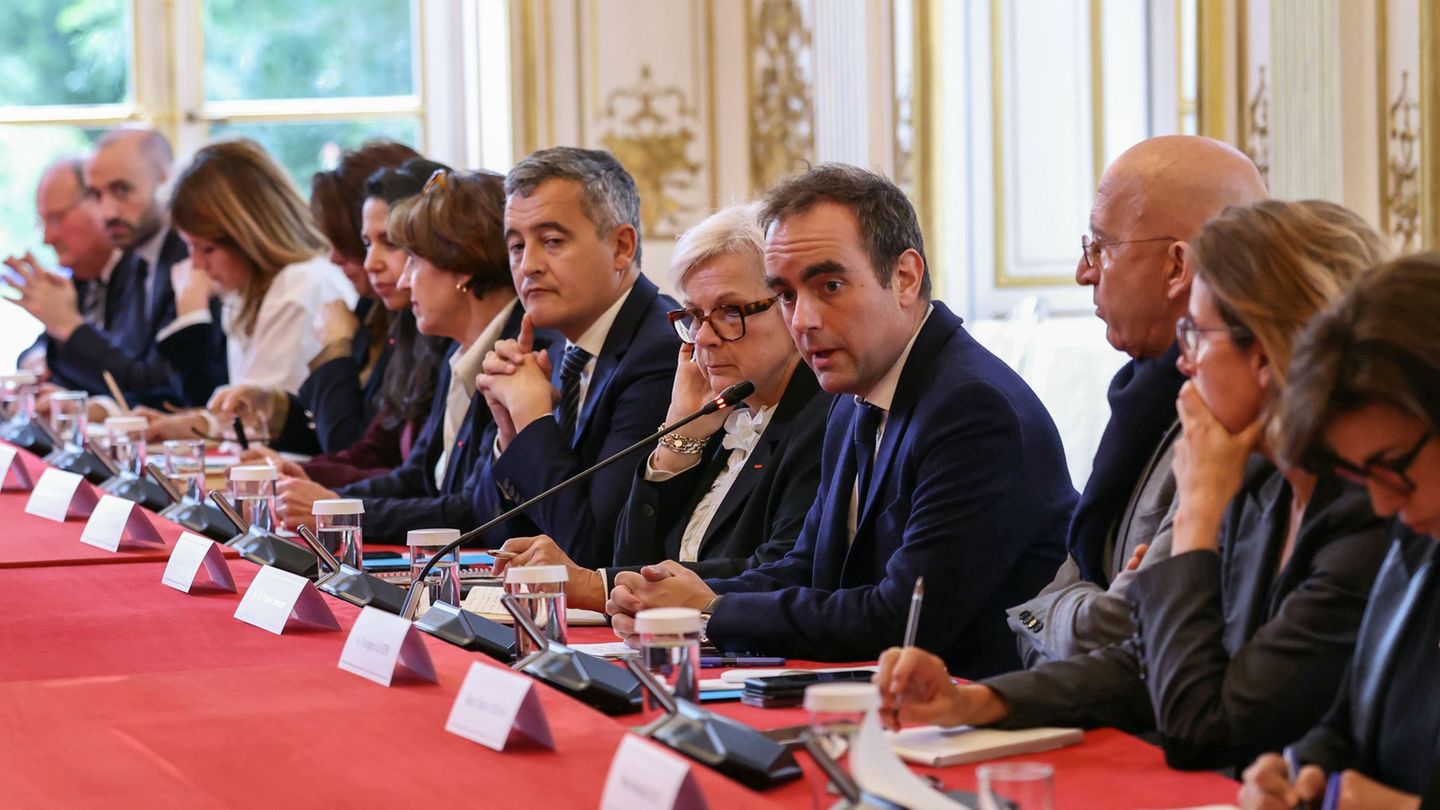He blue dollar rose $20 this Tuesday, January 23, was quoted $1,255 for sale, what marked a new nominal maximumand accumulate an increase of $35 in the last two dayswhile the gap with the official was at 52.7%, another record for the parallel exchange rate in the Javier Milei era, since it is the highest since the devaluation. And the most worrying thing is that these increases are another step in an escalation that led it to advance no less than $100 last week. In this note, a detail of why does it rise and what can be the ceiling.
From Eco Go, economist Rocío Bisang agrees that “these are complex days in political terms because of everything related to the omnibus law, but also because of the strike called for this Wednesday, January 24″. He points out that they combine several things, but particularly the two mentioned, which this week They add uncertainty to the economy.
And it is that the rise of the blue dollar of these last days occurs in a framework in which The ruling party presented the omnibus bill, which seeks a radical change in Argentina, modified in line with what the opposition requested and awaits its treatment. That coincides with The market is alert to how the general strike scheduled for this Wednesday, January 24 will unfold.driven by the General Confederation of Workers (CGT) against the measures promoted by the Government through that law and the Necessity and Urgency Decree 70/2023.
“In the face of this uncertainty, People seek greater security in the US currency, which generates precautionary demand and pushes it up“says Glustein.
Lower demand for pesos
For its part, for Andrés Reschini, analyst at F2 Soluciones Financieraspoints out that “the demand for pesos continues to fall and that, with negative rates, savers find themselves in a bind and many are forced to go towards dollars“. That is one of the reasons why the blue is rising in recent days, according to his view.
And this trend of savers is combined, according to Gustavo Quintana, from PR Change Operatorswith the fact that “In January the seasonality of the demand for pesos is reversed“, which becomes an offer, that is, there are pesos and they tend to go towards the Dolar blue due to lack of interesting savings instruments, with a traditional fixed term rate that is 9% monthly against an inflation of 25.5%.
The dollar card and a depressed official exchange rate
On the other hand, Quintana mentions that “since The card dollar is above $1,380induces people to pay expenses with the blue dollar”, which also puts pressure on the market.
Likewise, Bisang mentions that “There is beginning to be a change in devaluation expectations, with a crawling peg that, moving at 2%, falls short of inflation“.
In that sense, the economist Pablo Ferrari points out that “there is an upward trend, both in illegal and financial currencies, as a result of an official exchange rate, which is almost flat, in an economy with high inflationwhose last push was the great increase in the official exchange rate to get closer to the price of the parallels in December”.
In summary, consider that “blue rises at the rate of inflation“, since it is one more variable of the economy. That dissociates it from the official dollar, since it continues behind prices. “That reduces exchange rate competitiveness,” says Bisang and widens the gaps between exchange rates.
The gap and leap of the CCL
That dispersion between the price of the official and the parallels looks very marked in recent times, and that, from being at 29.5% the day after the 54% devaluation that the Minister of Economy, Luis Caputo, implemented on December 23 of last year (and in the middle it reached 17.8%, on December 20), It rose to above 50% this Tuesday.
Another key element that Reschini mentions is the dynamics of financial dollars, especially Cash With Settlement (CCL), which is historically arbitrated with the blue. He warns that, recently, he sees the cable dollar at somewhat high values. And, although he mentions that “today it fell for the first time after several rounds,” he indicates that this upward trend is not unrelated to the aforementioned drop in demand for pesos with high inflation and negative rates. These elements are combined with the uncertainty about the outcome of the law’s treatment in Congress.
What’s next: is there a ceiling for the blue dollar?
All this context, without a doubt, affects the bullish dynamics of the Dolar bluebut the great unknown always in this square is at what price can it reach.
“As always, it is a mystery, but one element to highlight is that is still below the dollar cardthat listed at $1,389“says Bisang in an attempt to find a possible ceiling. But he insists that it is a very difficult task to anticipate how far it can go.
And Glustein confirms this position by pointing out that “There is no ceiling because the market is very dynamic”. He risks that $1,300, which in recent days exceeded the Cash With Settlement (CCL) dollar, could be a limit, but he recognizes that “it is low, at least, in today’s scenario.” if the expectation of a more disorderly adjustment prevails and there is no success in the negotiations for the omnibus law.
Thus, it is a Russian roulette to risk the price of the blue dollar and its ceiling for the medium term. It has already passed to the MEP and, although the difference is still small ($1,233 for the MEP versus $1,255 for the blue), if it widens, the situation could return, there are some indications that It could be between $1,300 and $1,400based on that CCL and card can stop you In the next weeks.
Source: Ambito
I am a 24-year-old writer and journalist who has been working in the news industry for the past two years. I write primarily about market news, so if you’re looking for insights into what’s going on in the stock market or economic indicators, you’ve come to the right place. I also dabble in writing articles on lifestyle trends and pop culture news.




